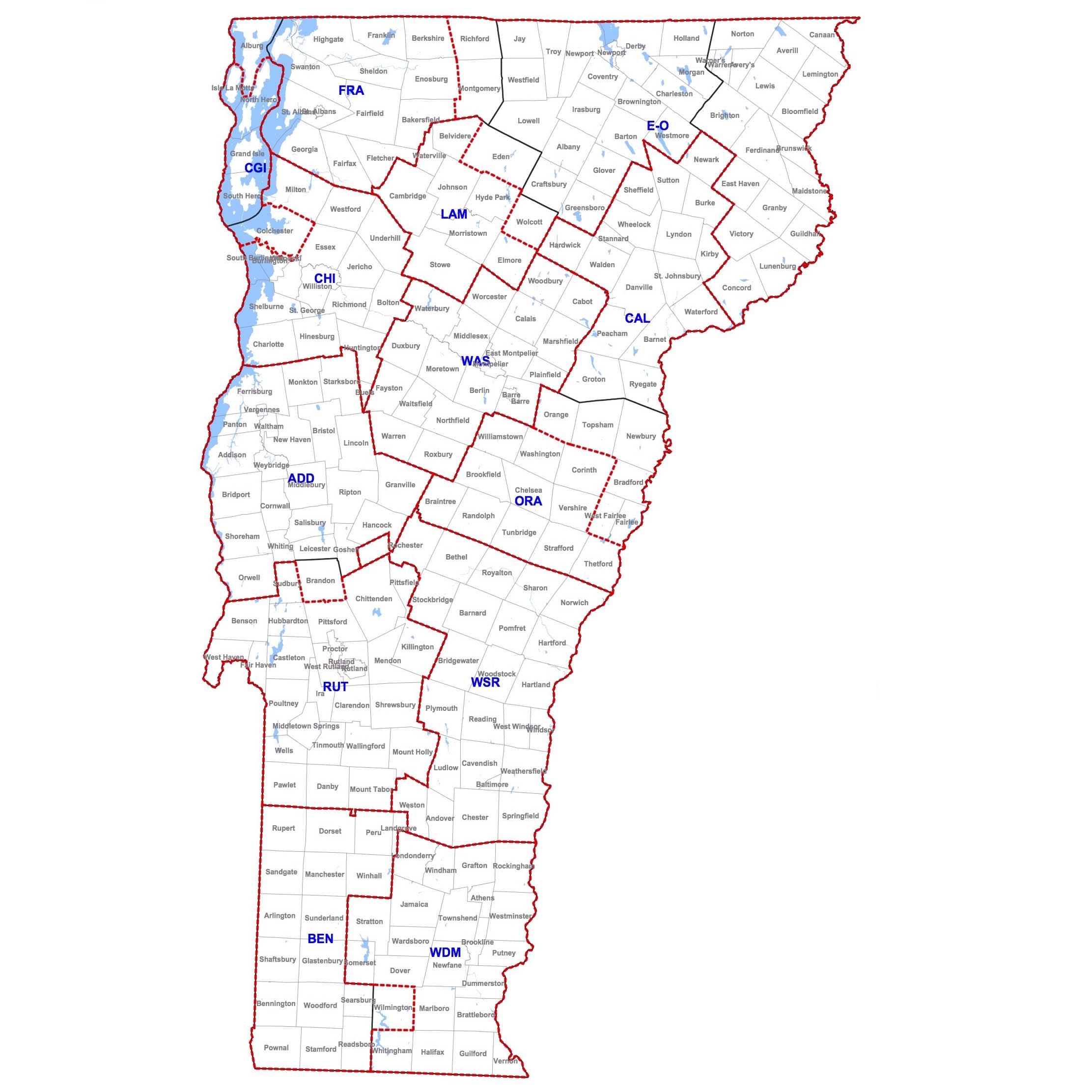
Declining population prompts redistricting proposal.
This piece first appeared in The Vermont Standard.
Vermont’s Legislative Apportionment Board (LAB) earlier this month proposed a plan that would alter all thirteen of the state’s current Senatorial Districts. The design calls for relatively minor reshuffling among some constituencies. The Windsor Senatorial District, however, which includes Woodstock and surrounding towns, is among those that would be substantially changed.
The state’s constitution requires reevaluation and possible adjustment of election districts every ten years, after the United States census; the independent LAB is charged with developing tentative plans for both the Senate and House of Representatives. The objective is to equalize, as much as feasible, representation across the state. In light of the most recent census, that means that each of the state’s thirty senators should now represent about 20,858 Vermonters.
Of course, it isn’t possible to achieve that ideal standard exactly, but when the deviations among districts get too big, that’s when “the courts say you are in trouble,” says Tom Little, who chairs the LAB. This year’s evaluation showed a sizeable percentage spread between the most under and over represented areas. Chittenden has 14,330 too many people, about 11.5% of its population, for its 6-senator allocation. Windsor, with 3 senators, has 5,900 too few, about 9.5%. That 21% swing, says Little, is significant and so “the status quo couldn’t be left completely alone.”
Little’s board of seven, which includes Republicans, Democrats and Progressives appointed through various, legally prescribed means, worked through a number of scenarios to arrive at their final recommendation. Vermont laws stipulate basic requirements for districts; towns in a district should be contiguous, for example, and county lines should be observed where possible. Little’s initial, minimalist proposal that balanced existing districts by moving a few towns didn’t garner enough support, some board members felt strongly that Vermont should establish more compact, 1- or 2-senator districts.
The LAB’s ultimate plan expands the current 13 districts to 15. It’s most acute recommendations split Chittenden into East, West and Central Districts, and combine parts of the Caledonia and Essex-Orleans Districts to form an area populous enough to support 2 senators.
The plan also proposes big changes for the Windsor and Orange Districts. Right now, Windsor County is an undivided, 3-senator district, and Orange County, less five northern towns that are aligned with Caledonia, is allotted 1 senator. Under the new plan, the eastern and southern towns of Windsor County would be split off into an independent 2-senator district. The County’s remaining nine towns, Woodstock, Bridgewater, Pomfret, Barnard, Stockbridge, Sharon, Royalton, Bethel and Rochester would join with all the towns of Orange County to form another 2-senator district. “Some people feel that 3-person districts are not a good thing,” says Little, “and that there is less accountability, it is harder to recruit people to run, and it is more expensive to run in those districts.” The plan does leave Rutland and Washington as 3-senator districts. “It is the art of compromise,” Little explains.
The LAB plan has been submitted to the Secretary of the Senate, who will refer it to the appropriate committee for consideration when the legislature reconvenes. The Senate may accept it as presented, modify it, or even start over from scratch. “This is the first chapter,” Little says. Both legislative bodies must pass the final plan, whatever it is.
Current Windsor Senator and Bethel resident Richard McCormack does not favor the LAB’s proposal, which, if he chooses to run in 2012, would have him campaigning in a significantly reconstituted district. He points out that the plan would land current Orange Senator Mark McDonald in the same boat. “Both Mark and I are veterans,” says McCormick, who has served for 18 years in total, “we have relationships with the people of [our respective] counties that I think are not just one sided.”
He also sees substantive value in representing the Windsor District jointly with Senators Alice Nitka and John Campbell. “We work well together,” he says, “we have personal loyalties to each other.” And, McCormick enjoys the diversity of Windsor County; its working class, logging, tourist, entrepreneurial, and white collar communities make it, essentially, a microcosm of Vermont. “As a state senator from Windsor County, I have to take a very broad, overarching view of every issue,” he says.
McCormick doesn’t see the Senate adopting the LAB plan as currently written, but if it does he says he will certainly do whatever needs to be done. “For me personally it is a bad thing,” he says, “but I don’t expect anybody to worry about that, except me, and maybe my wife.”
